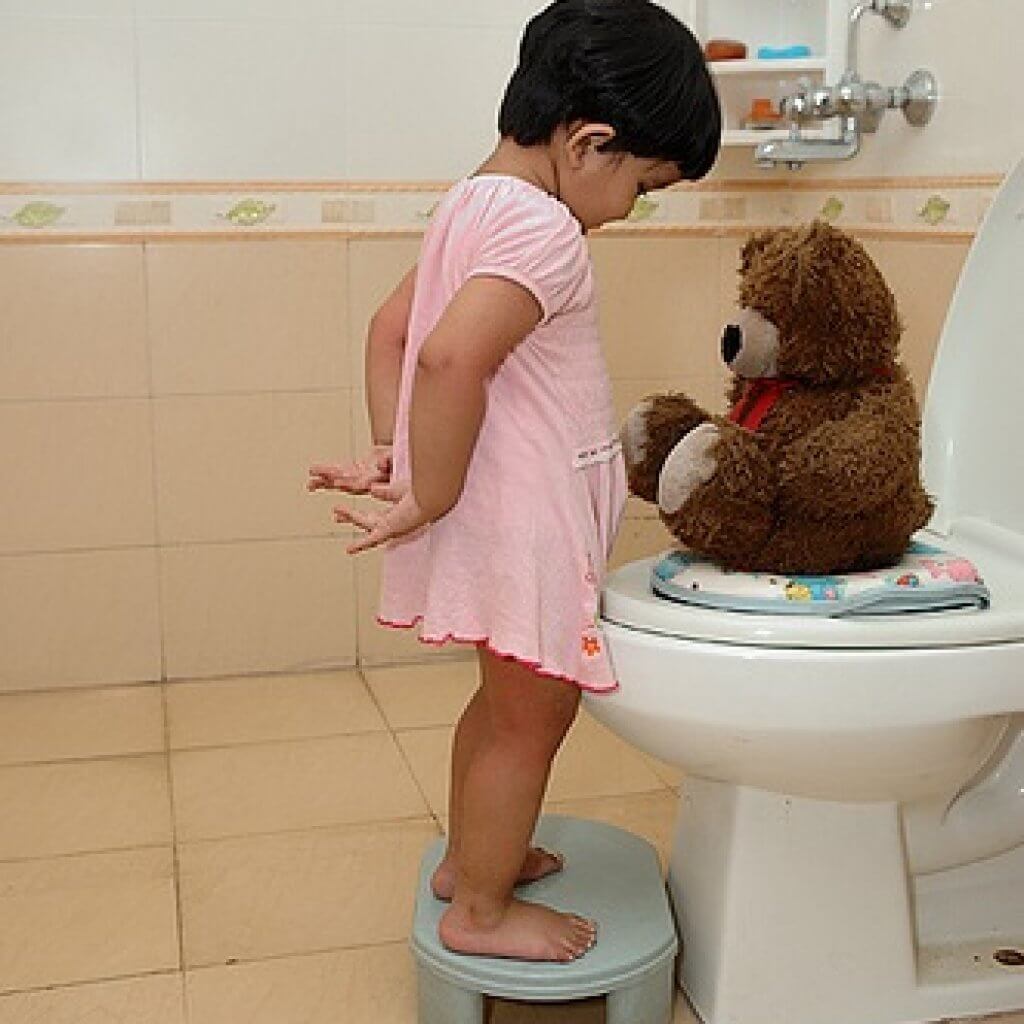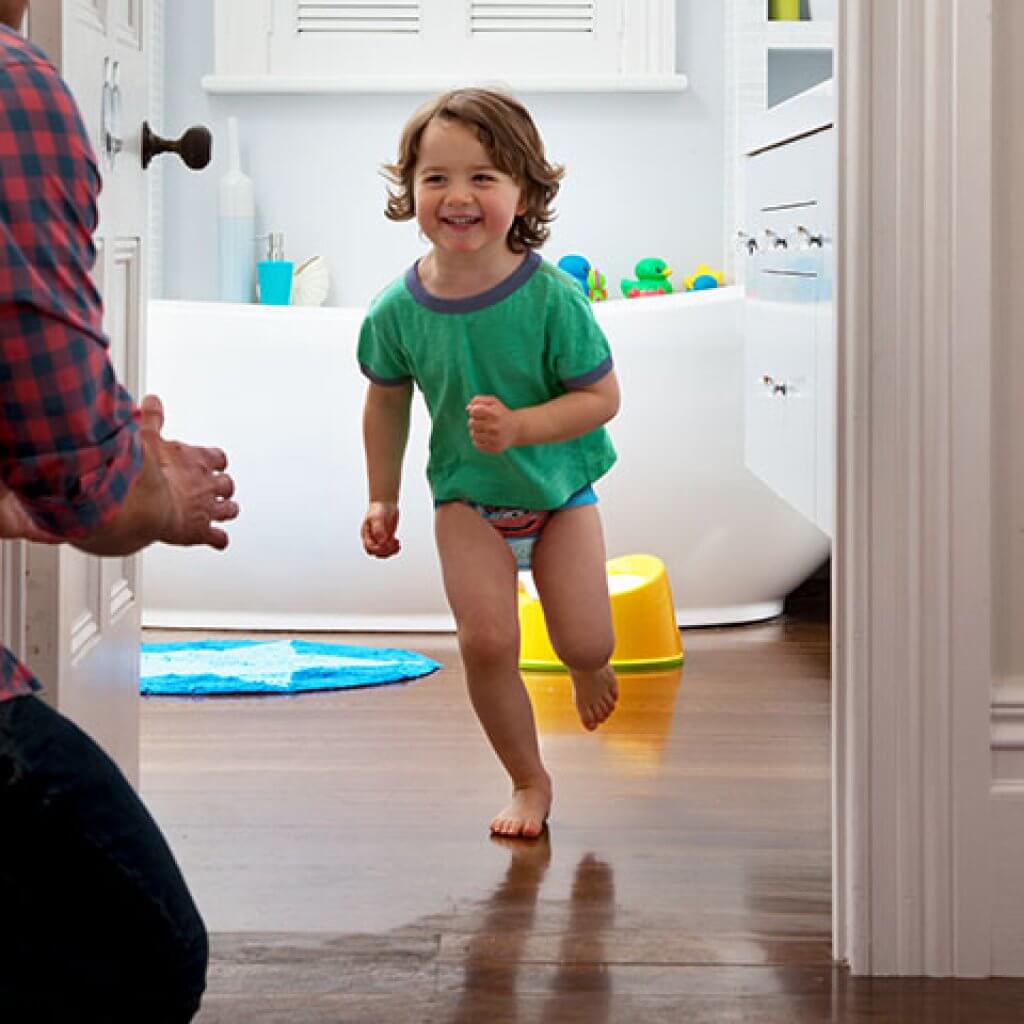Training Days: Get off the Pot!

One of the most memorable periods of raising children is when it’s finally time to start potty training. It ranks right up there learning to walk or ride a bicycle both for its importance, and its frustrations. For parents, like most things involving toddlers, potty training requires patience, time, and dedication. For children, it takes a degree of motivation on their part, not to mention a willingness to learn and the physical ability to do it. We always tried to express to our boys how much of a special time in their lives learning to use the potty is, and how big and important of a milestone it was that they were working to achieve. Still, for many kids, potty training is a stressful period that’s filled with ups and downs and the fear of the unfamiliar. Like learning to read or going off to their first day at school, these things can be a lot for children to process. As a parent, it can be hard to know just when your child is ready to begin their potty training regimen; for some it can be as early as 18 months, whereas others may not be ready until they’re over 3 years old. A good time to start might be when your child goes to the bathroom on a certain schedule, or they’re not only aware of having a dirty diaper, but they’re bothered by it. While you can expect some degree of difficulty in getting your child fully potty trained, from accidents to outright resistance, there are plenty of things that can help ease the transition period, and give you plenty of options to try in order to stay on track.
Get into a Routine

Potty training is an important milestone for your family. In order to set your toddler up for success, its best to already have a stable routine in place at home. Because potty training can be stressful for children, you want to avoid trying to do it in the midst of other important life changes such as starting school, sleeping in their own bed for the first time, or even introducing a new sibling to the family. Too much change at once can be a lot for kids to process, and you may find the task more difficult than it needs to be. If, however you can’t avoid it coinciding with other important changes in your family’s life, be sure to give your undivided attention when actually working on potty training.
Start Playing the Imitation Game

Children sometimes learn best by watching their role models do things. That may not always be best, but in this case, it affords you a good advantage. As parents, we spend a good amount of time trying to get our kids to leave us alone while we’re in the bathroom, but this is a good time to switch that policy. By watching mom and dad use the toilet you’ll take away the mystery of it and they may feel safer about trying it themselves. This could also be a good time to explain the differences between how boys and girls use the bathroom. You don’t need to go any further in depth than their age is able to handle, but you want to at least clear up any confusion that they might have.
Stock-up on Training Gear

So, you have some good routines down, your child has gotten a demonstration on how to use a toilet, now your next step is to pick up the right toddler potty equipment. Kid toilets work great for potty training for a number of reasons. For starters, they’re small and unintimidating. The fear of falling into the toilet is enough to send some kids running to their favorite potty hiding spot. These little toilets usually have fun colors and you can even personalize his or her toilet by putting their name on it or decorating with their favorite stickers. Additionally, these toilets are at a good height for your child, so they are in a comfortable position to go to the bathroom. If you decide to use a seat cushion for your existing toilet, you can still do some things to make it better for your toddler. In addition to making sure your seat cushion has a proper fit to avoid falling into the bowl, you’ll want a small stool to allow your child to safely climb up onto the toilet seat. Many pediatricians also recommend these stools so your child has somewhere stable to place their feet. This is especially important when it comes to going number 2, which can be difficult for some kids to learn on a toilet at first. Be sure to pack your potty training equipment up with you when you go on vacation, that way you won’t lose any of the progress that you’ve made.
Give it Some Space

The odds that you’re going to come home from the store, put the toilet down and have your toddler climb on top and go potty are slim. But that’s ok. If potty training were a foot race, it’d be a marathon, not a sprint. It’s important to not put too much pressure on your child as they learn. You may find that taking gradual steps is the best way to go. Try starting by having your child sit on the toilet with their clothes on for a few minutes. This will allow them to get used to the feeling. From there you can have them sit on their toilet while wearing their diaper for a few times a day. After that, they’re ready to try and sit on it with their bare bottom. You don’t need to expect them to go the first few times, you’re just trying to normalize the sensation of sitting on a toilet. Again, don’t expect progress to come in leaps and bounds; if it does, good, but if not, that’s okay too. All kids learn things at their own pace, and you want to avoid them getting discouraged or feeling like they’re letting you down.
Having Brief Encounters

You may never have pictured yourself as an underwear spokesman before, but get ready to be now. Toddlers can see wearing underwear like their older siblings or mom and dad as a badge of honor. Try hyping up the fact that now they get to wear real underwear instead of diapers. You can even make a fun day out of going shopping for their new underwear and let them pick out some that they like. With no shortage of super heroes, cartoon characters, and fun designs, your child may be excited to master the potty as quick as possible. For those children that maybe are a little more hesitant to let go of the diaper, you can still get them used to wearing underwear in much the same way that you progress them to learn to sit on the toilet. Start off by letting them wear them over their diaper for a little while at a time. From there, when you feel its safe to do so, give them “underwear time” in the same way you probably did naked time as a baby to keep diaper rash at bay. After a while they’ll probably feel much more comfortable in the underwear than the diaper and be motivated for potty training.
Take it One Day at A Time

Kids can be like adults in their bathroom routines. After waking up, after a meal, before bath time, and many other daily checkpoints are great times to consistently work on potty training. It’s important to try it at times that they normally go to the bathroom anyway as that’s your best chance at an easy win. Make the times they sit on the potty consistent from day to day to keep the turbulence down; most kids thrive in a routine way of life.
Celebrate Small Wins

Get ready to be a cheerleader, because it’s a great way to encourage additional effort. You have to celebrate each victory along the way; don’t reserve your praise for just going potty on the toilet. Your child is stretching outside of their comfort zone with each attempt, so be vocal about their progress. Some parents like to incentivize or reward their child’s potty training achievements. You can give them extra television or game time, since now they’re “such a big boy/girl.” You might even reward them with a treat like going to the park or going out for ice cream. The idea is to just keep the experience fun and motivating for your child, no matter how slow they’re getting along.
Get the Teacher on Board

Some parents might like to keep potty training in-house as more of a private matter. To a degree that’s a fair outlook, but don’t undervalue your child’s teacher when it comes to keeping up with progress. Simply share with his or her teacher that you’re working on potty training and even some of the things you are trying. My 5 year old still goes to school with a spare change of clothes in his backpack just in case, and his teacher knows what to do in the event an accident happens, however unlikely it is. Since your toddler spends a good portion of their day at school, its wise to have a plan in place for when they’re there. Additionally, take your child into the rest room at school and show him or her how the different things work. Kids may be intimidated by touchless toilets and faucets, so giving them some practice without other kids rushing them could help ease them into it.
Be Firm & Gentle

If you were wondering where foot-down parenting came in to potty training, here it is. Most kids don’t invite the notion of potty training with open arms; it’s new, it’s different, it’s scary. Like eating vegetables or going to bed on time, expect some degree of push back. You can seize the initiative however by using the correct phrasing. Don’t ask your child if they want to go sit on the potty. This opens it up as an option, and you may find yourself in the middle of a power struggle. Instead, simply tell them that it’s time to sit on the potty for a little bit. Once they see it as a non-negotiable endeavor, they’ll begin to apply their coping mechanisms rather than resisting. Know where to draw the line however; if your child is screaming and crying don’t try to physically hold them down on the toilet, as this will just set any progress back.
There Must be a Book for That

I can’t tell you how many books we’ve used to help illustrate lessons to our boys. Maybe it’s the fun colors or the simple wording, or maybe it’s just having something to help get through difficult conversations. Either way, there is no shortage of good literature on potty training that is geared towards toddlers. From classics like “Everyone Poops” all the way to “Potty Train”, chances are that there’s a book out there right up your little one’s alley. Books can help normalize using the toilet for your child, especially if they’re characters they can relate to. Besides just reading to your child about going to the bathroom, the books will be great toilet-time reading while they wait.







